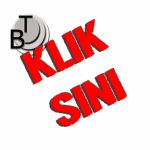Tutorial [HTML] . part I
HTML
what is HTML? HTML stand for HyperText Markup Language... HTML is very easy to use; it was designed that way... you don't have to
be a programmer to use it. if you can edit a text file,, then you can write
HTML [and if you can write email,, you can edit a text file]... if you tried
to learn before and couldn't,, then someone wasn't telling you the right
things...
This tutorial will explain the structure of HTML quickly and clearly,,
and show you through examples the practical things you need to know,, so you
can be making your own pages soon [like, this afternoon]...
In this tutorial, you'll create small pages and view them. There
aren't really any "required" exercises, but you should play with
new concepts until you're comfortable with them. If your browser supports
frames, fire up this
HTML Test Bed
[non-frames version],,
where you can type HTML in one frame and see the resulting page in another.. resize the input and output frames/windows for best viewing...
If your browser doesn't support frames,, or when you're making real
pages,, you'll want a real text editor.. Start up TeachText on the Mac,
pico in Unix, or Notepad in Windows, or a better one if you have
it [here's
a directory of text editors at Yahoo]... give your HTML files names ending
in ".html" [or ".htm"].. use your browser to view the HTML files you create,,
with the menu command "File/Open File" or something similar;
use the "Reload" function after each change... you don't need an "HTML editor" program to write HTML... some
people like to use them, and that's fine, but many pros and beginners prefer
to use a plain text editor and insert the tags themselves, as we're doing
here... to each their own...
OK, ready?1. Anatomy of an HTML tag.
Tags have a simple structure. They begin with a < character, and end with a > character. Between the <> characters are the tag name, and maybe some attributes, depending on the tag. Most attributes take a value too.. some attributes are required, and some are optional.. the general form of a tag is
tag names and attribute names are not case-sensitive, but some attribute values are.. the tag name must come first, but the order of the attributes doesn't matter.. so you could also write this tag as:<tagname attribute1="value1" attribute2="value2" ... >
different people write them different ways; do whatever you're most comfortable with...<TAGNAME ATTRIBUTE2="value2" ATTRIBUTE1="value1" ... >
there are many different tags to do many different things.. for example, use the <img> tag to show an image on your Web page:
is rendered as<img src="blueribbon.gif">
This means "show the picture blueribbon.gif at this place on the page." note that the src attribute gives the URL of the image file, either a relative or absolute URL.. the above example using an absolute URL would be:
<img src="http://www.jmarshall.com/easy/html/blueribbon.gif">
KillerKips: aku mintak maaf sebab entry kali ni aku taip dlm Bahasa Inggeris,, entry selepas ni same jugak...












































0 comments:
Post a Comment